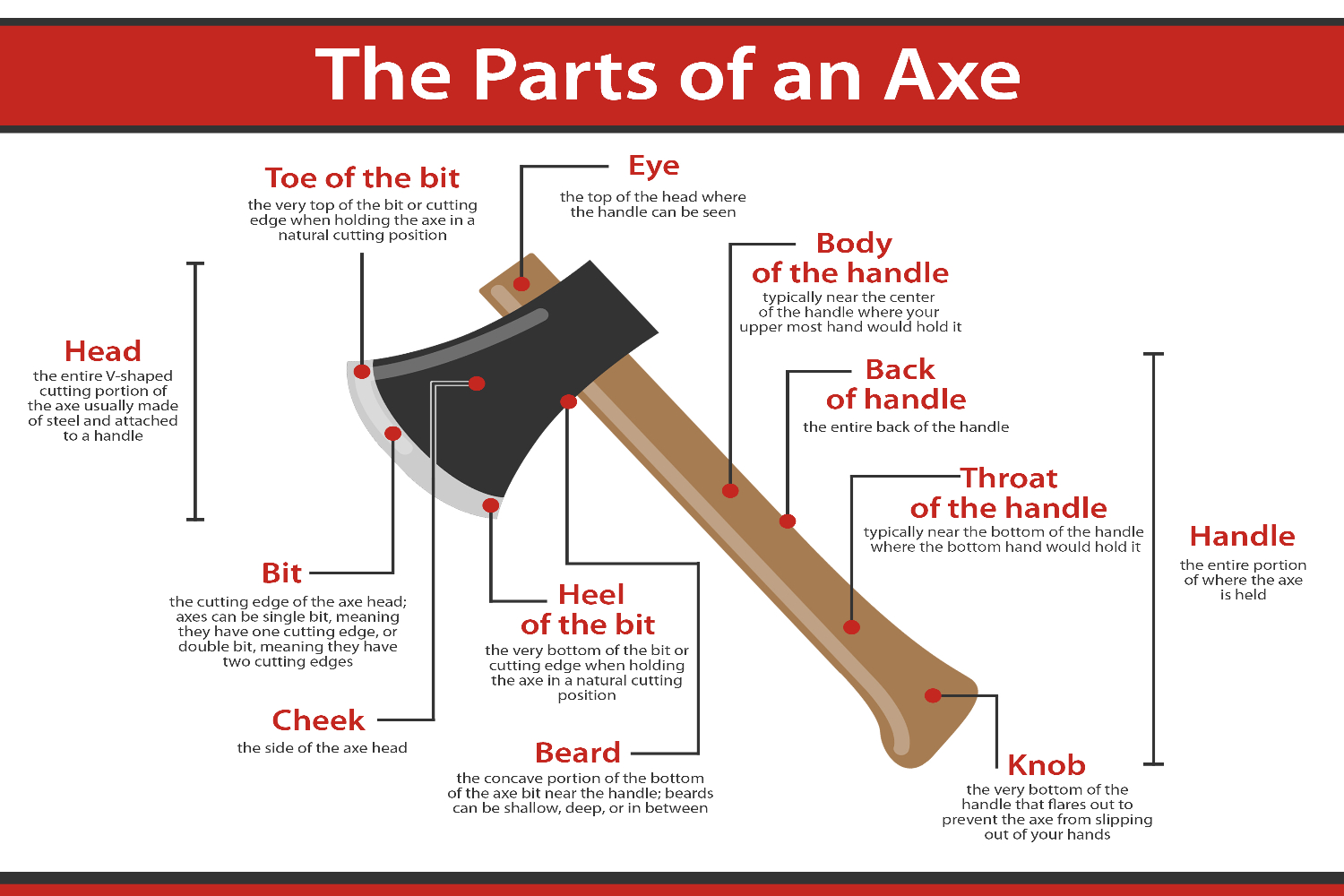Sometimes when you purchase a new axe or other bladed tool you will need to freshen up the edge. Even if it comes razor sharp right off the shelf, it will eventually dull and lose its edge.
There are a few different ways to sharpen your bladed tool, but one of the most popular is to use a sharpening stone. It’s a fairly simple process, but if you have never done it before, you might not know where to start.
Don’t worry! We have you covered.
Choosing the Right Type of Stone
The most important part of using a stone to sharpen your axe or knife is knowing what type of stone you have. Or, if you have yet to purchase one, knowing what type to buy.
Believe it or not, there are quite a few options to choose from.
Natural Stones
Sometimes referred to as Japanese water stones, natural stones are a type of sharpening stone that was used widely in the past. But, they are slowly becoming scarce due to Japan not mining them anymore.
Natural stones are basically a type of whetstone. You won’t want to try and sharpen your blade on them dry, so at the very least, use some water.
As they name suggests, they are natural. And, being so they don’t often have a consistent grit.
While that might seem like a bad thing, the natural variations in the grit actually create an uneven blade on a very small scale. Your edge will still be very sharp, but it will wear down at different rates, thus keeping your cutting edge sharper longer.
While they are some of the best and most sought after stones due to their effectiveness, they are also a bit softer than some of the more common whetstone varieties. That means they usually require a little more maintenance and might not last as long.
Whetstones
Whetstones or oilstones are the most common type of sharpening stone. They tend to be the most affordable option due to their availability.
Whetstones can be natural like Japanese water stones, or they can be artificially manufactured. Thus, there is no one type of whetstone.
The natural stones are mostly made of quartz. A certain kind of quartz that’s most common used is called novaculite.
Novaculite has different grains, from very coarse to a more porous grain. The coarse novaculite is often referred to as Arkansas stone due to its origin, thus why you will see some whetstones called Arkansas stones.
The artificial stones are made of various materials like:
-
- Aluminum-Oxide
- Silicon-Carbide
- Aluminum-Oxide
If you have or end up purchasing a whetstone, make sure to use a lubricant like water or a type of sharpening stone oil to prolong the stone’s lifespan.
Diamond Stones & Plates
Diamond stones, sometimes called diamond plates or diamond hones, are not actually giant chunks of diamond. They are usually steel that has been coated with a diamond grit.
Since the diamond in the coating is so much harder than the steel edge of your tool, it will grind away the steel rather easily. Compare it to using sandpaper on a softwood.
Diamond sharpening stones tend to cost more than the other previously mentioned options due to the high cost of the diamond grit compared to that of other materials like aluminum-oxide and ceramics.
Another difference with this type of sharpening tool is that you don’t need to use a lubricant.
They also have incredible lifespans, so if you plan to sharpen a lot of tools often, this might be the choice for you.
Choosing the Right Grit
While the type of stone you use matters, so does the grit of the stone. Much like sandpaper, you can choose from coarse grit options to fine grit options.
And, like sandpaper, the grit is measured by a number. The lower the number the more coarse the grit.
For example, a stone with a 400 grit would be considered coarse, while a stone with a 1200 grit is much finer.
The most useful grit is going to be something on the coarse side. A 400 or 600 grit stone is going to be very abrasive. That means it will quickly raise a burr on the edge you’re working on.
For an axe you use to split logs or fell trees, you don’t really need to consider ever going with a higher grit as you’re not doing precision work. If you are sharpening a knife, then opting for a 1000+ grit stone in addition to a coarse stone will help you get a really sharp blade.
Sharpening Your Blade
Now that you have the right type of stone with the right grit, it’s time to focus on how to actually use it. Overall, it’s a fairly simple process.
Wet or Dry?
One of the most commonly asked questions is whether you should use your stone wet or dry.
In most circumstances, lubricating your stone is going to be a the right choice. When you use a honing oil, you’ll get these benefits:
-
- longer lifespan of the stone
- less friction thus quicker work
- a more even edge
The only real exception here is if you are using a diamond stone in which case you can skip the lubrication.
Find the Right Angle
Probably the most difficult part of sharpening your tool is finding the angle of the edge of your axe or cutting tool. In general, you want to aim for keeping the angle as similar as possible to what the edge is currently.
What makes this a little more difficult on an axe than on a knife is that the angle on an axe bit actually changes gradually as you move along the edge.
On most axes the angle of the part of the bit closest to the edge is about 30 degrees while it changes to around 15-20 degrees as you move closer to the center. This of course depends on the type of axe you have and the manufacturer shaped it originally.
Forwards of Backwards?
Another common question is how exactly do you slide the blade across the stone. But before you get started with that, you need to know how to hold your axe or knife.
The proper way to hold it while using a sharpening stone is to use your dominant hand to hold the handle. Then you want to turn the axe or blade flat so that it’s parallel to the ground.
Fan out the fingers on your other hand, and place them just behind the edge of the bit. You can see an example in the image below.
This will allow you to safely control the blade while sharpening it.
And, as you can also see in the image, you can move the blade both forward and backward. Though with axes, there’s actually a better way.
As mentioned earlier, the angle of an axe bit changes as you move along the cutting edge. A great way to make sure you sharpen the entire bit is to move in small circles and not long strokes.
The video below is a great visual example to follow.
It takes a little getting used to, but after a few tries, you’ll be sharpening like a pro.
In Summary
Whether you are sharpening a knife, an axe, or even a straight razor, using a sharpening stone is very solid choice. You can quickly take a dull blade to a very sharp blade.
Another bonus is that when compared to some other methods like using a grinder, it’s safer and usually much cheaper.
As long as you have a general idea of what you are doing, and you start slow, you should be fine. And always remember, whenever you’re working with any kind of tool, think safety first.
Filed Under: Blog















